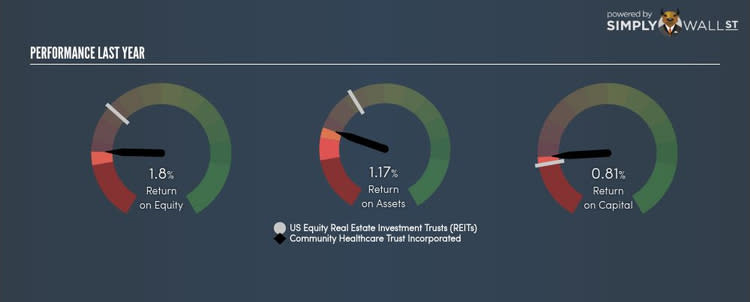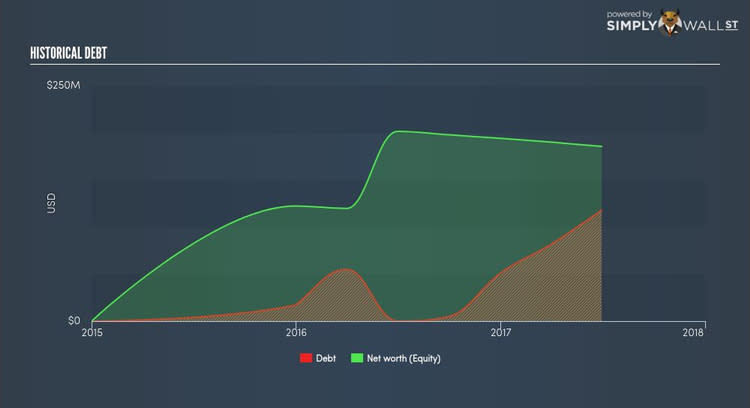Did Community Healthcare Trust Incorporated (CHCT) Create Value For Investors Over The Past Year?

Community Healthcare Trust Incorporated (NYSE:CHCT) generated a below-average return on equity of 1.80% in the past 12 months, while its industry returned 8.29%. Though CHCT's recent performance is underwhelming, it is useful to understand what ROE is made up of and how it should be interpreted. Knowing these components can change your views on CHCT's below-average returns. I will take you through how metrics such as financial leverage impact ROE which may affect the overall sustainability of CHCT's returns. See our latest analysis for CHCT
Peeling the layers of ROE – trisecting a company’s profitability
Return on Equity (ROE) is a measure of CHCT’s profit relative to its shareholders’ equity. For example, if CHCT invests $1 in the form of equity, it will generate $0.02 in earnings from this. In most cases, a higher ROE is preferred; however, there are many other factors we must consider prior to making any investment decisions.
Return on Equity = Net Profit ÷ Shareholders Equity
ROE is measured against cost of equity in order to determine the efficiency of CHCT’s equity capital deployed. Its cost of equity is 8.49%. Since CHCT’s return does not cover its cost, with a difference of -6.70%, this means its current use of equity is not efficient and not sustainable. Very simply, CHCT pays more for its capital than what it generates in return. ROE can be broken down into three different ratios: net profit margin, asset turnover, and financial leverage. This is called the Dupont Formula:
Dupont Formula
ROE = profit margin × asset turnover × financial leverage
ROE = (annual net profit ÷ sales) × (sales ÷ assets) × (assets ÷ shareholders’ equity)
ROE = annual net profit ÷ shareholders’ equity
Essentially, profit margin shows how much money the company makes after paying for all its expenses. The other component, asset turnover, illustrates how much revenue CHCT can make from its asset base. Finally, financial leverage will be our main focus today. It shows how much of assets are funded by equity and can show how sustainable CHCT’s capital structure is. Since financial leverage can artificially inflate ROE, we need to look at how much debt CHCT currently has. The debt-to-equity ratio currently stands at a sensible 63.47%, meaning the ROE is a result of its capacity to produce profit growth without a huge debt burden.
What this means for you:
Are you a shareholder? CHCT’s ROE is underwhelming relative to the industry average, and its returns were also not strong enough to cover its own cost of equity. Since its existing ROE is not fuelled by unsustainable debt, investors shouldn’t give up as CHCT still has capacity to improve shareholder returns by borrowing to invest in new projects in the future.
Are you a potential investor? If CHCT has been on your watch list for a while, making an investment decision based on ROE alone is unwise. I recommend you do additional fundamental analysis by looking through our most recent infographic report on Community Healthcare Trust to help you make a more informed investment decision. If you are not interested in CHCT anymore, you can use our free platform to see our list of stocks with Return on Equity over 20%.
To help readers see pass the short term volatility of the financial market, we aim to bring you a long-term focused research analysis purely driven by fundamental data. Note that our analysis does not factor in the latest price sensitive company announcements.
The author is an independent contributor and at the time of publication had no position in the stocks mentioned.


